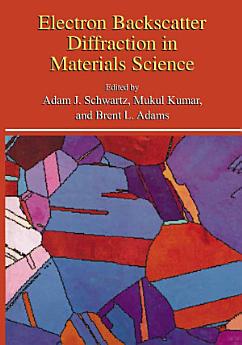Electron Backscatter Diffraction in Materials Science
Adam J. Schwartz · Mukul Kumar · Brent L. Adams · David P. Field
Jun 2013 · Springer Science & Business Media
eBook
339
Halaman
reportRating dan ulasan tidak diverifikasi Pelajari Lebih Lanjut
Tentang eBook ini
Crystallographic texture or preferred orientation has long been known to strongly influence material properties. Historically, the means of obtaining such texture data has been though the use of x-ray or neutron diffraction for bulk texture measurements, or transmission electron microscopy or electron channeling for local crystallographic information. In recent years, we have seen the emergence of a new characterization technique for probing the microtexture of materials. This advance has come about primarily through the automated indexing of electron backscatter diffraction (EBSD) patterns. The first commercially available system was introduced in 1994, and since then of sales worldwide has been dramatic. This has accompanied widening the growth applicability in materials scienceproblems such as microtexture, phase identification, grain boundary character distribution, deformation microstructures, etc. and is evidence that this technique can, in some cases, replace more time-consuming transmission electron microscope (TEM) or x-ray diffraction investigations. The benefits lie in the fact that the spatial resolution on new field emission scanning electron microscopes (SEM) can approach 50 nm, but spatial extent can be as large a centimeter or greater with a computer controlled stage and montagingofthe images. Additional benefits include the relative ease and low costofattaching EBSD hardware to new or existing SEMs. Electron backscatter diffraction is also known as backscatter Kikuchi diffraction (BKD), or electron backscatter pattern technique (EBSP). Commercial names for the automation include Orientation Imaging Microscopy (OIMTM) and Automated Crystal Orientation Mapping (ACOM).
Beri rating eBook ini
Sampaikan pendapat Anda.
Informasi bacaan
Smartphone dan tablet
Instal aplikasi Google Play Buku untuk Android dan iPad/iPhone. Aplikasi akan disinkronkan secara otomatis dengan akun Anda dan dapat diakses secara online maupun offline di mana saja.
Laptop dan komputer
Anda dapat mendengarkan buku audio yang dibeli di Google Play menggunakan browser web komputer.
eReader dan perangkat lainnya
Untuk membaca di perangkat e-ink seperti Kobo eReaders, Anda perlu mendownload file dan mentransfernya ke perangkat Anda. Ikuti petunjuk Pusat bantuan yang mendetail untuk mentransfer file ke eReaders yang didukung.





